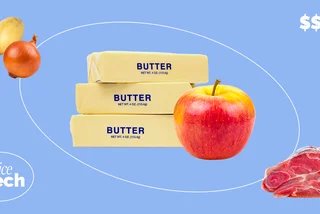For many would-be investors, getting started is the hardest part. It’s daunting to read about the many types of investment products, and picking the right product to best suit your circumstances requires careful thought. As rising prices make the importance of investing wisely ever clearer, Expats.cz asked Jan Stránský, Wealth Manager at Wood & Co., to explain some essential investment products and how they differ.
Floor vs. Ceiling
Stránský explains the relative risks and rewards of various investment products through a “floor vs. ceiling” comparison, in which the “ceiling” is the highest possible return and the “floor” is the lowest (with the potential of even losing your invested funds). “Products that are high risk usually offer a high ceiling, but consequently a low floor. More conservative products usually offer a lower ceiling but a higher floor,” Stránský explains.
Ceiling: Church tower / Floor: Mine shaft (high-risk)
Stocks
A form of security that indicates the holder has proportionate ownership in the issuing corporation, sold predominantly on stock exchanges.
“The longer you hold your stocks, the greater the probability of making a profit,” Stránský elaborates. “Historical returns of the S&P 500 Index (traded on the New York Stock Exchange) are around 9.90 percent per year in capital appreciation (meaning the growth of your originally invested money). Ups and downs on the stock market are normal, though, and I would strongly recommend doing your homework on the company whose stock you choose to invest in.”
Cryptocurrency
A digital currency designed to work as a medium of exchange through a computer network that is not reliant on any central authority, such as a government or bank.
“The world of blockchain and cryptocurrency is volatile, with high peaks and low valleys. But many believe that this sector is the future and choose to invest in it for its short or long term potential,” Stránský comments.
Ceiling: Upper level / Floor: Basement (medium-risk)
Real Estate Funds
Funds which invest in commercial or residential real estate. Their success depends on the size of the fund, number of tenants, cash flow and occupancy rates, among other variables. “If invested wisely, these funds offer stable and modest long-term returns,” Stránský describes.
ETFs
An exchange-traded fund (ETF) is a type of investment fund that is an exchange-traded product. ETFs own financial assets such as stocks, bonds, currencies, debts, futures contracts, and/or commodities.
ETFs have decreased risk, because they invest in entire sectors or multiple assets, instead of into one individual asset. Investors benefit from this increased diversification because while it may limit their upside, it minimizes their downside risk.”
Ground-floor safety (low-risk)
Bonds
Individuals lend money to a government or company at a specific interest rate for a given period of time. The amount of money they make in interest depends on the specific bond which they invest in.
“Government bonds are typically very secure but offer lower yields. Corporate bonds typically offer higher yields but carry greater risks. Bonds are secured to varying degrees, but they’re generally considered to be more conservative products, providing investors with coupon payments over a period of time. In most cases, though, you won’t be able to access your funds until the bond’s maturity date,” Stránský explains.
Money market account
Any interest-bearing account at a bank or credit union.
“Considered to be very safe, these accounts usually don’t outperform inflation, but they’re still a better option than letting your money sit idly in a checking account,” Stránský concludes.
This article was written in cooperation with WOOD & Company. Read more about our partner content policies here. Disclaimer: Trading financial instruments carries risks. Always ensure that you understand these risks before trading.












 Reading time: 3 minutes
Reading time: 3 minutes 





















